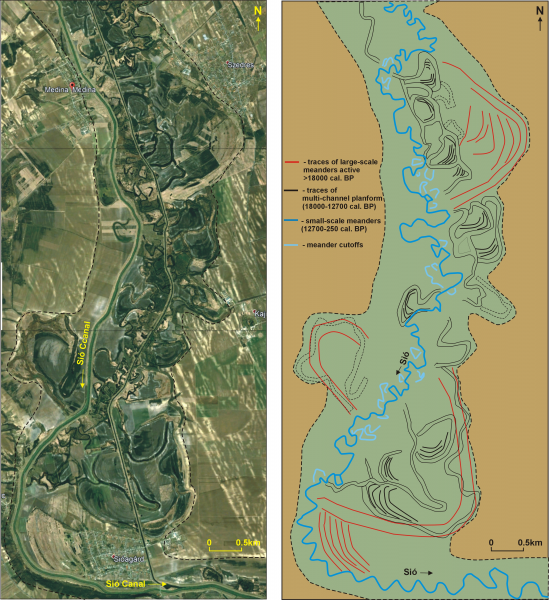Little is known about how rivers of loess landscapes of Europe looked like before their transformations into artificial canals 250 years ago. Research conducted in the Sió Valley (Transdanubia, Hungary), allowed for a reconstruction of the river channels’ shape during the last 20000 years.
Based on geophysical and geological surveys, sediment dating and analyses of satellite images, it was found that large meanders of a 3 km diameter (equal to the valley width) shaped the Sió River Valley at least 20000 years ago. They were replaced by a multi-channel river with stable islands, active between 18000 and 12700 years ago. Next, the Sió River started to meander.
Humans exerted influence on the Sió river during the last 7000 years by cutting down forests on the valley slopes causing the erosion of the slopes and a deposition of a fine loess material to the valley bottom and river bed. The Sió River was transformed into two artificial canals by humans in the 18th century.
The research was part of a research project funded by the National Science Centre, Poland (grant no 2016/23/B/ST10/01027) directed by prof. UAM dr hab. Marcin Słowik in a cooperation with Universities of Pecs and Szeged (Hungary) and Lodz (Poland). The results of this research have been published in Catena journal:
Słowik M., Dezső J., Kovács J., Gałka M., Sipos G., 2021, Phases of fluvial activity in loess landscapes: findings from the Sió Valley (Transdanubia, central Europe). Catena, 198, 105054 DOI: 10.1016/j.catena.2020.105054


